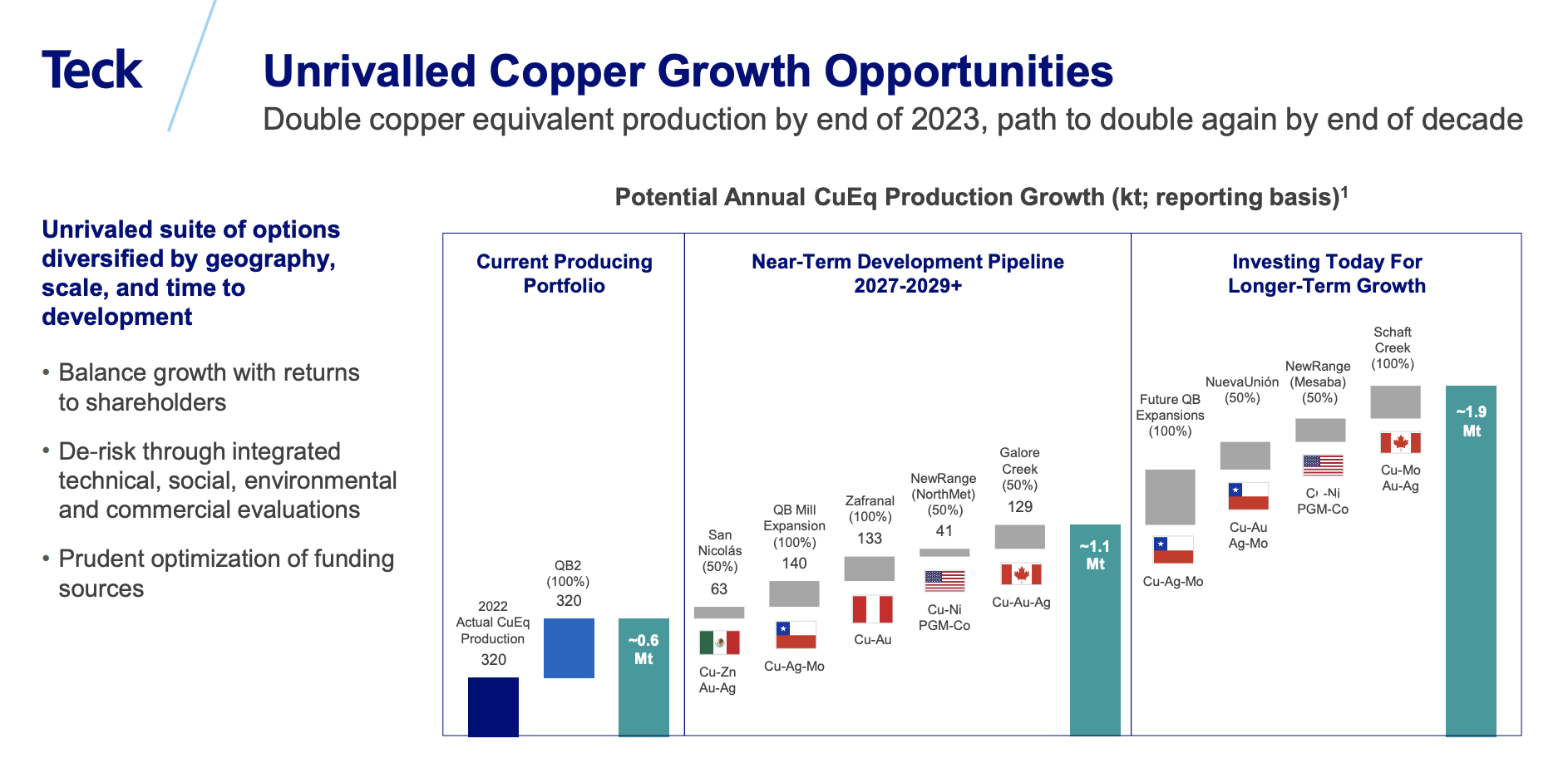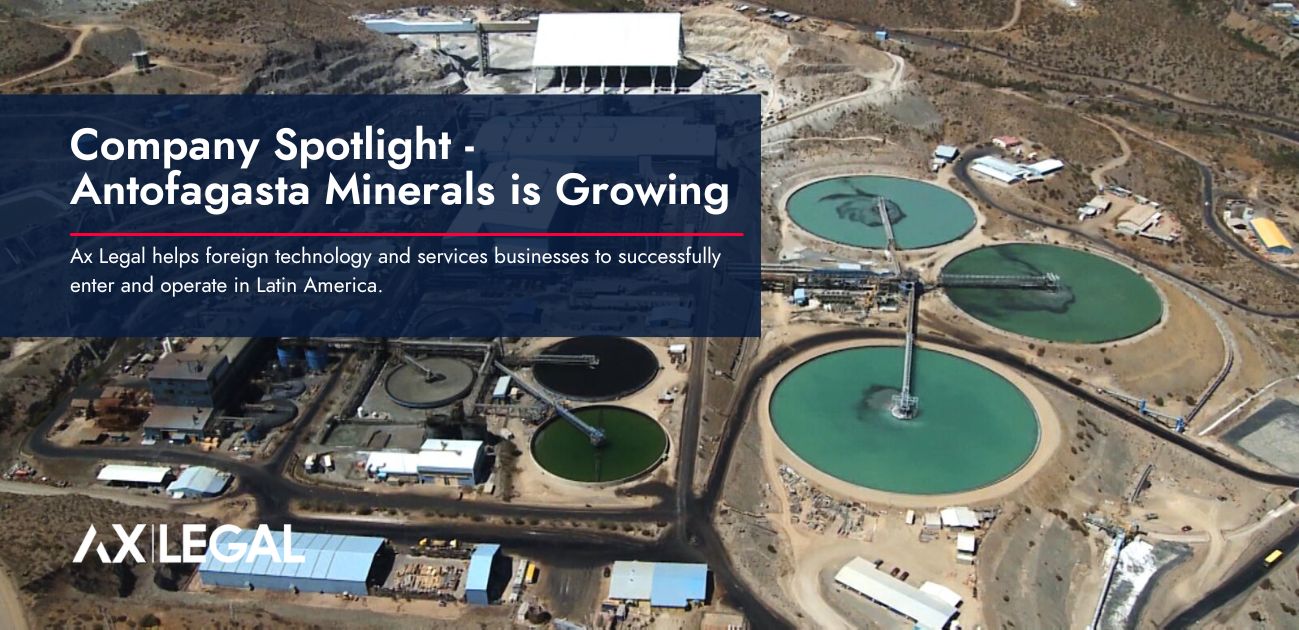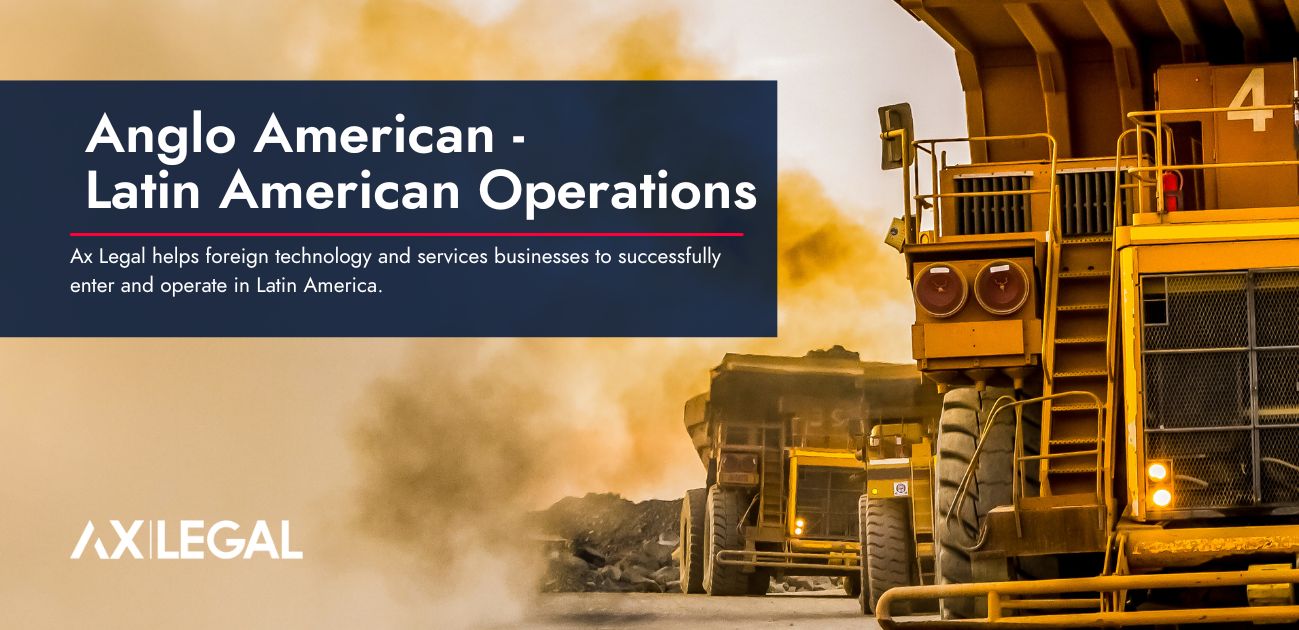Peru Project Spotlight – USD$1.2b Zafranal Project

Teck Resources has grown into an important copper, zinc, and coal producer over the last decade. The company has been able to drive significant returns to shareholders over this time through both strategic growth and operational efficiencies. It is not going unnoticed by players in the industry considering last month’s news about Glencore’s take-over offer.
To understand why Teck is so attractive, you only need to look at its project pipeline. The company has been particularly successful at building a copper pipeline that has completely transformed its business at a time when the world needs more copper.
Teck’s most recent QB2 copper project in Chile just announced first production last month. At full production, QB2 will double Teck’s copper output and will be considered a long-life, low-cost operation with major expansion potential. Although Teck exceeded its budget for building the mine, the project has state of the art technology that will make it efficient and more sustainable than similar sized mines, giving the company a huge advantage as copper demand picks up in the coming years.
Now the company has more good news to share. It was just announced this month that received regulatory approval from the Peruvian Environmental authorities, for the Zafranal copper project located in the Arequipa Region. The Zafranal project fits perfectly with the Teck’s strategy of developing high-quality, low-cost copper assets in well-established mining jurisdictions in the Americas.

Zafranal Project Overview
- The Zafranal Copper-Gold Project is located approximately 90km from the city of Arequipa, and 150km from the Port of Matarani, in Peru.
- Compañía Minera Zafranal (CMZ) is the owner the project. Teck has an 80% stake in CMZ while the remaining 20% is held by Mitsubishi Materials Corporation (MMC).
- Zafranal has an expected mine life of 19 years. The project’s original budget was USD$1.15bn but Teck has acknowledged that the cost will be most likely be over USD$2bn.
- Copper ore processing, including crushing, grinding, flotation, thickening and filtering, will be carried out in a concentrator plant with a processing capacity of up to 80,000 tonnes of ore throughput per day. The mine and concentrator are expected to produce an average of 133,000 tonnes of copper contained in concentrate during its first 5 years of production.
Mining Process and Infrastructure
- Mining Method:The project will be a conventional open-pit mining method integrating truck and shovel operations.
- Pits: The project considers the development of two pits, Zafranal and Victoria (Last three years), from where it is extracted will be approximately 441 million tons (Mt) of sulfide ore, and 502 Mt of rock waste.
- Tunnel and Conveyor Belt: The mineral will be transferred from the Zafra pit to the concentrator plant through a conveyor belt that can self-generate electricity. The conveyor belt will run through a tunnel of 3.5 km long, covering a total distance of 3.98 km.
- Concentrator Plant: The plant of process will have an average capacity processing of 64 ktpd. the process it involves a primary crusher, a grinding circuit, a flotation circuit integrating regrinding and reagent treatment, and a filtration circuit.
- Tailings Deposit: The tailings will be thickened and will have a storage capacity of 436 million metric tons and will occupy a super area official of 576 hectares.
- Water Supply: The project will use water from the aquifer brackish water that has formed under the Majes pampa, at a depth of approx. 200m. The water is not fit for human consumption or agriculture usage. 15 wells will be installed located in the area of Majes El Pedregal, and the water will be pumped through a 53km pipeline to the concentrate plant.
- Energy Supply: A high voltage electric transmission line (220 kV) will be built from the existing Yarabamba substation in Arequipa, towards a new substation located within the project area, approximately 96 km in length.
- Roads: A new 9km-long access road will be constructed to connect the project site with the Pan American Highway, at Pedregal de Majes, and approximately 26km of the existing gravel-topped access road connecting Anexo de Pedregal to the plant site will be refurbished. The concentrates from the project will be trucked to Anexo de Pedregal, and further to the Port of Matarani by road.
- Buildings: The project will also involve the construction of administrative buildings and an accommodation camp, a warehouse, a tailings management facility (TMF), and a 3,600m-long tunnel to convey the ore to the crushing circuit.
- Camps: The project will have with camping facilities with all services, to house up to 4,120 people during the construction stage.
- Employment: In the construction stage, the project will generate approximately 3,000 direct jobs and 1,000 indirect jobs. And in the operating stage, approx. 834 direct and 423 indirect jobs.
What’s Next?
- The company will now begin the detailed engineering stage of the project scheduled with a plan to start construction in 2025 and production for 2028.
- According to Teck, the Zafranal team will update project capital and operating cost estimates and will develop detailed engineering plans as well as permitting activities through 2023. The project could be positioned for a formal project sanction decision as early as H1 2024.
Ax Legal is an advisory firm that works with foreign companies in Latin America. Our team of legal and commercial advisors have a distinguished track record of helping foreign technology and services companies to grow and operate in Latin America. Over the years, we have worked with starts up, mid-size businesses, and publicly listed companies. The one common factor that connects our clients is that they are leaders in their field, providing innovative technologies and services to the industrial sectors.
To better understand how we can support you in the Region, please contact Cody Mcfarlane at cmm@ax.legal



 Santiago
Santiago Sydney
Sydney Lima
Lima